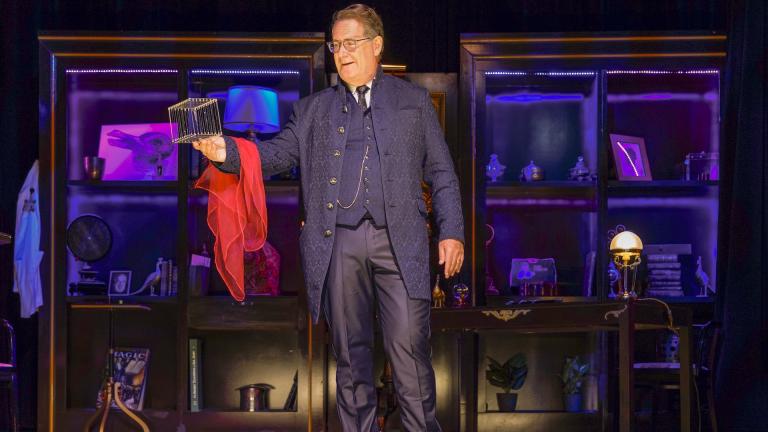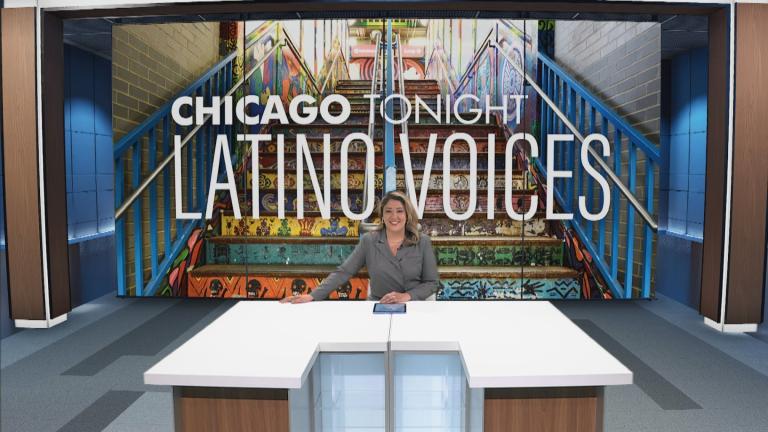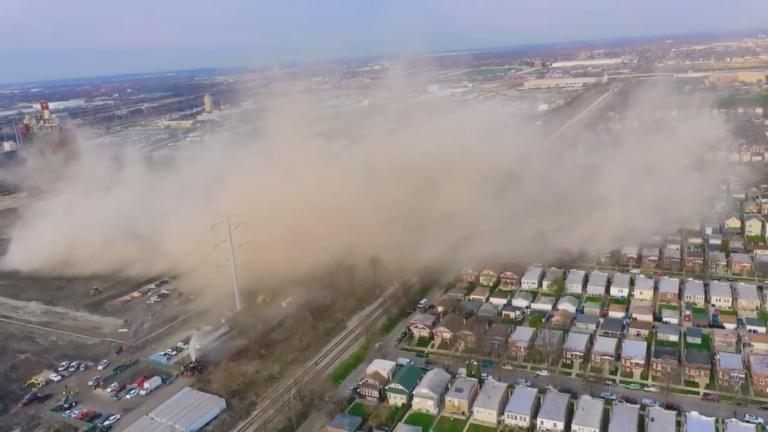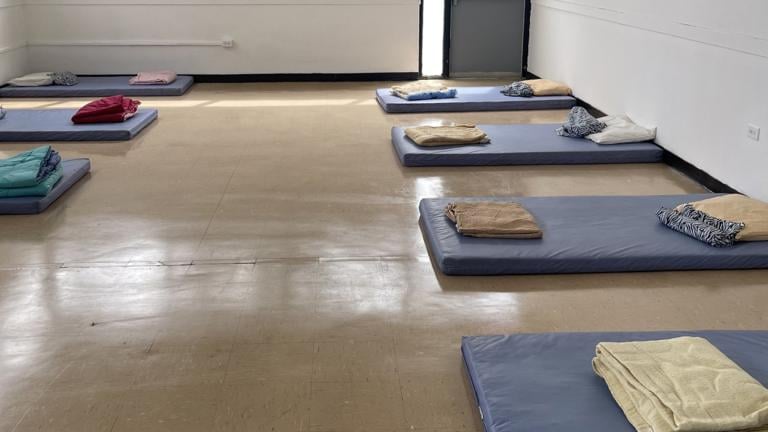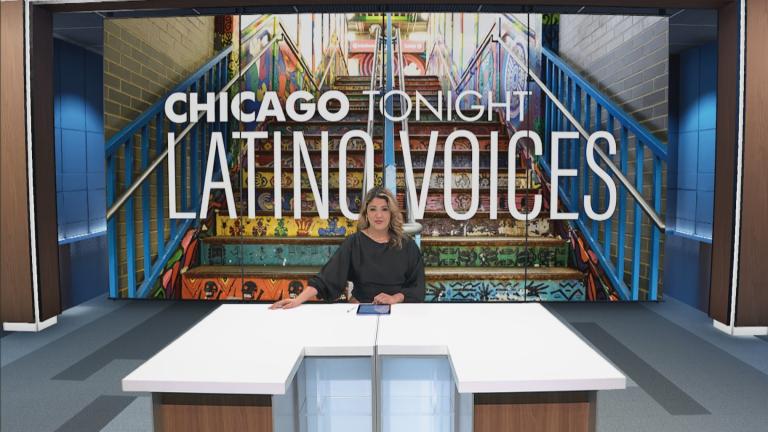What does it mean to be native Mexican after centuries of colonization? And how do those cultures present themselves today, despite efforts at their erasure?
Those are the questions at the heart of “Los Huecos del Agua” at the National Museum of Mexican Art. The exhibition features works by artists with roots in the native Mexican cultures and has traveled to Chicago after presentations in Mexico City and Puebla.
Artist Ana Hernández hails from Tehuantepec, Oaxaca, a city on Mexico’s isthmus famous for its matriarchal culture. She says she uses traditional techniques and materials that reflect the region.
“’luvia Dorada’” is a piece I did in a large format in which I used elements of the dress of a Tehuana woman. This is a piece that you wear in your hair. It’s an element that’s small, about 10 cm,” Hernandez said in Spanish. “Gold has always been very present in the isthmus because more than being an economic resource, it also transfers its value from generation to generation.”
“It’s a project that visualizes how the state of Mexico taught us how to view indigenous people and has erased the individuality, and particularities of each small town. That’s what they taught us,” curator Itzel Vargas Plata said in Spanish. “We forget that they were like individual nations, where each one spoke in their own language, specific way of thinking. This is an opportunity to get into different geographies and touch on these themes that are very relevant to this day.”
Juchitán native José Ángel Santiago adapted the ancient fresco technique, usually used for murals, to create his work “Tremor en el Istmo.” The piece is part of a series Santiago created in the wake of the 2017 Juchitán earthquake. Santiago says the beliefs the people of Juchitán had about the earthquake’s origin are reflected in his work.
“After the earthquake, for various reasons, I stayed in Juchitán for about eight to nine months,” Santiago said. “There were many conversations with the community and people asked themselves why the earth had shook that way.”
That approach of respecting the perspectives of native communities is why Vargas Plata said the National Museum of Mexican Art is the right place for this exhibition.
“I think that should be a museum's role: to not just say ‘this is the reality’ but instead with your community, create that dialogue and arrive at other perspectives with ‘common’ realities,” Vargas Plata said.
The National Museum of Mexican Art is located in Pilsen at 1852 W. 19th St. For more information visit nationalmexicanmuseumofart.org.

